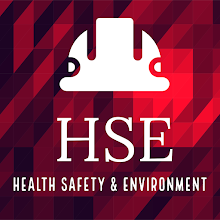Accident: an event that results in injury or ill health
Incident:
Near miss: an event that, while not causing harm, has the potential to cause
injury or ill health. (In this guidance, the term near miss will be taken to
include dangerous occurrences)
Undesired circumstance: a set of conditions or circumstances that
have the potential to cause injury or ill health, eg untrained nurses
handling heavy patients.
Dangerous occurrence: one of a number of specific, reportable adverse events,
as defined in the Reporting of Injuries, Diseases and Dangerous Occurrences
Regulations 1995 (RIDDOR).
Hazard: the potential to cause harm, including ill health and injury; damage to
property, plant, products or the environment, production losses or increased
liabilities.
Immediate cause: the most obvious reason why an adverse event happens, eg
the guard is missing; the employee slips etc. There may be several immediate
causes identified in any one adverse event.
Consequence:
Fatal: work-related death
Major injury/ill health: (as defined in RIDDOR, Schedule 1), including fractures
(other than fingers or toes), amputations, loss of sight, a burn or penetrating injury to the eye, any injury or acute illness resulting in unconsciousness, requiring resuscitation or requiring admittance to hospital for more than 24 hours
Serious injury/ill health: where the person affected is unfit to carry out his or her
normal work for more than three consecutive days;
Minor injury: all other injuries, where the injured person is unfit for his or her normal
work for less than three days.
Damage only: damage to property, equipment, the environment or production
losses. (This guidance only deals with events that have the potential to cause harm
to people.)
Likelihood that an adverse event will happen again:
Certain: it will happen again and soon
likely: it will reoccur, but not as an everyday event
Possible: it may occur from time to time
Unlikely: it is not expected to happen again in the foreseeable future
Rare: so unlikely that it is not expected to happen again.
Risk: The level of risk is determined from a combination of the likelihood of a specific undesirable event occurring and the severity of the consequences
(ie how often is it likely to happen, how many people could be affected and how bad would the likely injuries or ill health effects be?)
Risk control measures: are the workplace precautions put in place to reduce the risk to a tolerable level?
Root cause: an initiating event or failing from which all other causes or failings spring. Root causes are generally management, planning or organisational failings.
Underlying cause: the less obvious ‘system’ or ’organisational’ reason for an adverse event happening, eg pre-start-up machinery checks are not carried out
by supervisors; the hazard has not been adequately considered via a suitable and sufficient risk assessment; production pressures are too great etc.







0 Comments